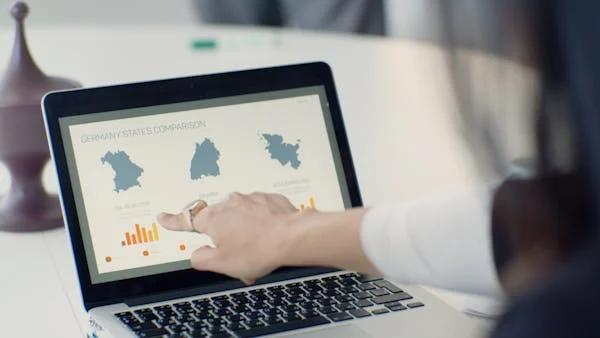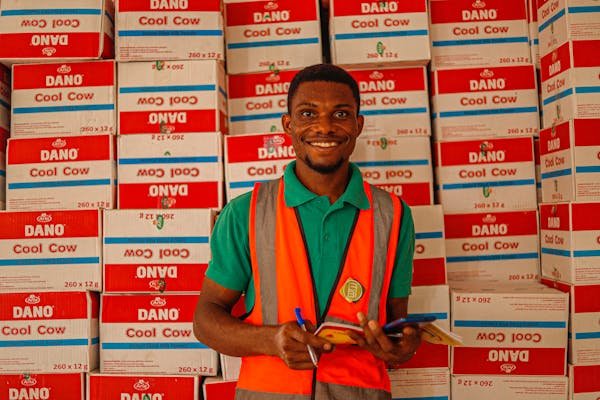Cross-border tech mergers and acquisitions (M&A) are changing fast. Companies are no longer just looking to grow at home—they’re eyeing opportunities across borders, in new markets with different strengths. Some regions are cooling down, others are catching fire.
1. Cross-border tech M&A accounted for 42% of all global tech M&A volume in 2023
Why it matters
That’s nearly half of all tech deals happening across country lines. This stat isn’t just big—it’s massive. It shows how global the tech world has become. Companies no longer see borders as barriers; they see them as bridges to fresh opportunities.
This rise means more businesses are choosing to buy overseas instead of building from scratch. It’s quicker, often cheaper, and can bring in new customers, teams, and technologies overnight.
What’s driving it?
Several factors:
- Remote work has made cross-border collaboration easier.
- Investors are pushing for faster growth and global reach.
- Emerging markets are producing innovative startups at lower costs.
- Access to specialized talent and IP is better overseas in many sectors.
Tech giants and mid-sized firms alike are now exploring international deals to stay ahead.
What should you do?
If you’re a startup or growing tech firm, this trend is a signal: your next investor or buyer might not be from your home country. Make your business easy to understand for global players. Translate your investor pitch, clarify your IP ownership, and make sure your financials are audit-ready. Global acquirers will want clarity.
If you’re on the buy-side, consider setting up an internal “cross-border playbook.” It should include due diligence workflows, cultural onboarding processes, and risk checks that are region-specific.
2. Asia-Pacific inbound tech M&A rose by 37% year-over-year in 2023
The APAC magnet is real
Asia-Pacific is becoming a favorite destination for tech investments. A 37% year-over-year jump isn’t a small bump—it’s a strong signal that the region is buzzing with activity. Countries like India, Singapore, Vietnam, and Indonesia are leading the charge.
What’s attracting the deals?
A few core reasons:
- Young, digital-native populations
- Fast-growing internet and mobile usage
- Affordable, skilled tech talent
- Governments offering tax breaks and startup incentives
In addition, many APAC countries are becoming “tech hubs” in their own right. Whether it’s AI, fintech, healthtech, or edtech, the region is now creating products with global demand.
How can you ride this wave?
Founders in APAC need to think global from day one. Build your products to scale outside your country. Use English-friendly branding. Make your backend architecture cloud-ready for global usage. Position yourself as a future acquisition target by keeping clean cap tables and defensible IP.
Investors looking at APAC should focus on segments with high consumer adoption and fast monetization. Look closely at regulatory frameworks—some markets are easier than others. Local partnerships can make or break your entry.
3. The U.S. remained the top acquirer in cross-border tech deals, contributing to 52% of outbound transactions globally
America still leads the buying game
More than half of all global outbound tech deals in 2023 came from the U.S. That’s no surprise. American companies have strong cash positions, active venture ecosystems, and a deep-rooted “buy vs. build” mindset. Plus, many U.S. firms see international M&A as the fastest way to enter new regions without starting from zero.
Why do U.S. firms prefer buying abroad?
- Scale: It’s easier to acquire 10% of a foreign market than start fresh.
- IP: Many startups in Europe and Asia have niche tech that fills gaps.
- Talent: Teams in markets like Eastern Europe or Southeast Asia are cost-effective and highly skilled.
- Competition: U.S. markets are crowded; going global offers breathing room.
Key takeaway
If you’re building a tech firm outside the U.S., make yourself visible to American buyers. Attend U.S.-backed demo days, list on global startup platforms, and get U.S.-based legal and tax advisors early on. Many acquirers prefer businesses structured in Delaware or Singapore because it reduces friction.
If you’re an American firm, don’t just focus on buying for size. Buy for strategic fit. Look for deals that enhance product synergies, open new channels, or unlock new IPs.
4. European tech firms were involved in 33% of cross-border tech M&A deals in 2023
Europe punches above its weight
Despite its fragmented market and regulation-heavy reputation, Europe remains a big player in global tech M&A. One in every three cross-border tech deals last year had a European company on one side of the table.
What’s driving this?
- A mature startup ecosystem in cities like London, Berlin, and Paris
- Government-backed innovation funds fueling early-stage growth
- Strong exit markets and active private equity participation
- A renewed focus on strategic acquisitions post-Brexit
European tech companies are increasingly seen as stable, with well-built products, good engineering culture, and strong data protection compliance. That makes them attractive targets for both U.S. and Asian acquirers.
What should founders and buyers know?
European founders should take compliance seriously—it’s often a dealmaker. Keep your GDPR documentation tight. Make sure you have country-specific legal entities structured well.
Buyers should segment Europe. The Nordic countries, for instance, behave very differently from Southern Europe. Pay attention to local employment laws, tax regimes, and language barriers. Deals that look great on spreadsheets can get stuck in culture or regulation traps if you’re not careful.
5. China’s outbound tech M&A dropped by 61% from its 2016 peak
A major shift in the world’s second-largest economy
Once a powerhouse in outbound deals, China has stepped back in a big way. From its 2016 peak, outbound tech M&A has dropped by a staggering 61%. That’s not a small adjustment—it’s a strategic retreat driven by a mix of internal and external forces.
What’s behind the decline?
There are several layers to this:
- Capital controls: Chinese regulators have tightened restrictions on how companies deploy capital abroad.
- Geopolitical tension: Strained relationships with the U.S., Europe, and parts of Asia have made overseas deals harder to approve.
- Domestic focus: Chinese tech companies are now focusing more on consolidating local market share and responding to new domestic regulations.
- Regulatory hurdles: Foreign governments are becoming more cautious about approving Chinese ownership of sensitive tech.
This decline doesn’t mean China is losing its edge—it means it’s changing its playbook.
Actionable advice
If you’re a Western or Asian tech startup, don’t count on Chinese buyers the way you might have a few years ago. While interest still exists, especially in sectors like semiconductors, robotics, and clean tech, deals are fewer and harder to close.
Instead, look for Chinese joint venture or licensing partners if you want to enter the market. Build relationships with local accelerators and provincial governments. Meanwhile, keep an eye on outbound investment from Hong Kong-based or multinational firms that still carry Chinese capital but operate with different flexibility.
For investors and advisors, be sure to evaluate the regulatory environment in both jurisdictions before initiating cross-border China-related deals. If the political or legal climate is uncertain, it’s better to pursue partnerships over full acquisitions.
6. India saw a 44% increase in inbound tech M&A activity in 2023
India: the new darling of tech investors
India’s tech sector has been booming, and global buyers are noticing. A 44% increase in inbound tech M&A activity in just one year shows the country’s massive appeal.
What’s fueling this growth?
- Digital transformation: India’s population is rapidly coming online, especially in smaller cities.
- Startup ecosystem: Over 100+ unicorns and thousands of fast-scaling startups make it a rich hunting ground.
- Government support: Reforms like Digital India and incentives for foreign investment are paying off.
- Cost advantage: Skilled tech talent is still relatively affordable, especially in tier 2 and tier 3 cities.
U.S., European, and even Japanese firms are now investing or acquiring Indian startups to enter the massive market and gain backend support for global operations.
How to make the most of it?
If you’re an Indian startup, this is your time. But you need to look polished. International buyers look for clarity in financials, product-market fit, and leadership stability. Also, protect your IP—many acquirers now require local trademarks and patents to go through.
For foreign firms looking at India, it’s essential to go beyond Bangalore and Delhi. Tier 2 cities like Pune, Ahmedabad, and Jaipur are growing tech hubs. But don’t underestimate local nuances. Cultural adaptation, compliance with Indian tax law (like TDS and GST), and political risk management are non-negotiables.
Use local advisors to guide the deal structure, and explore hybrid models like minority investments and revenue-share partnerships before committing to full buyouts.
7. Cross-border M&A made up 60% of deal volume in AI and deep tech sectors globally
AI knows no borders
When it comes to artificial intelligence and deep tech, the market is truly global. A massive 60% of all deal volume in these areas now involves cross-border activity. That tells us one thing—nations are sourcing intelligence wherever they can find it.
Why are these deals happening internationally?
- Talent concentration: Some of the best AI researchers are in countries like Canada, Israel, the U.K., and India.
- IP acquisition: Buying companies is often faster than developing complex AI capabilities in-house.
- Strategic alignment: Governments and large enterprises want AI capabilities that match their long-term visions—and will go anywhere to get them.
From autonomous vehicles to medical diagnostics and industrial automation, AI and deep tech are becoming core to competitive advantage.
What you should do next
If you’re an AI startup, you should know you’re hot property. But don’t wait for buyers to come knocking. Position your company clearly—what specific problem do you solve? How is your model trained? What are your data sources? These are questions that global buyers are asking.
Secure your IP with patents in multiple jurisdictions, and structure your data governance clearly. If your data sources violate EU or U.S. privacy laws, that could kill a deal.
Acquirers should build AI-specific diligence playbooks. Unlike traditional tech deals, AI M&A requires deeper code review, model interpretability testing, and ethical risk assessments. Make sure your legal team knows what to look for.
8. Canada’s tech sector saw a 29% rise in inbound M&A deals, mostly from U.S. acquirers
Canada: quiet but powerful
Canada often flies under the radar, but its tech sector is having a moment. A 29% rise in inbound M&A deals—driven largely by American firms—shows just how attractive Canadian innovation has become.
What makes Canada so appealing?
- Strong AI research: Centers in Toronto, Montreal, and Edmonton are globally respected.
- Stable regulation: Compared to the U.S., Canada has a less combative political environment.
- Cultural alignment: Shared language and legal structures make cross-border deals smoother.
- Talent visa policies: It’s easier to retain and attract global tech workers in Canada than in the U.S.
How to act on this?
For Canadian tech founders, the message is clear: keep going. Build strong U.S. relationships early. Apply for U.S. startup accelerator programs and consider dual incorporation (Canada + Delaware) if you’re aiming for acquisition in the next 3–5 years.
U.S. buyers should consider Canada for more than just AI. Fintech, healthtech, and cleantech are also thriving. Due diligence is often easier, but don’t skip compliance reviews—data localization and provincial regulations can still vary. Also, don’t underestimate competition from Canadian pension funds and domestic PE firms—they’re becoming more aggressive in protecting local champions.
9. Latin America experienced a 23% year-over-year rise in cross-border tech M&A in 2022
Latin America is heating up
For a long time, Latin America was seen as high-risk territory for tech investments. That’s changing. With a 23% year-over-year rise in cross-border tech M&A, the region is proving its tech resilience and innovation potential.
What’s changed?
- Digital adoption: COVID accelerated tech usage across LATAM—especially in payments, logistics, and edtech.
- VC boom: Over $15 billion was invested in LATAM startups in 2021 alone, creating a pipeline of mature targets.
- Rising middle class: Consumption of digital services is growing fast.
- Policy reform: Countries like Brazil, Colombia, and Mexico are making it easier for foreign firms to operate.
Cross-border M&A is now seen as a faster route into LATAM’s fragmented markets, especially as traditional expansion strategies face delays due to regulatory complexity.
How to navigate this opportunity?
Startups in LATAM need to focus on transparency. Make your revenue numbers clear, show retention metrics, and demonstrate how you handle hyperinflation, currency fluctuations, or political instability. These are top concerns for foreign buyers.
Global acquirers should look beyond the big names. Argentina, Chile, and Peru have hidden gems in niche sectors like agtech and climate tech. Use local advisors, explore earn-out models, and consider minority stakes as entry points.
Avoid cookie-cutter approaches. LATAM is not one market—it’s many. Each country has its own rules, challenges, and advantages. A playbook that works in Mexico won’t work in Brazil.
10. The Middle East, led by the UAE and Saudi Arabia, saw a 48% increase in outbound tech M&A
The desert is no longer just sand—it’s a tech launchpad
The Middle East, particularly the UAE and Saudi Arabia, is rewriting its story. Known for oil and real estate, these nations are now making big moves in global tech. A 48% increase in outbound tech M&A is a clear sign that they’re looking beyond their borders and investing heavily in the future.
What’s driving the outbound wave?
- Vision 2030 and similar reforms: Saudi Arabia is pushing hard to diversify beyond oil, and tech is a key target.
- Sovereign wealth funds: Entities like Mubadala and PIF have billions to deploy and a growing appetite for innovation.
- Domestic saturation: With small home markets, regional giants must look outward for scale and tech access.
- Global ambitions: These countries want to be seen as global innovation leaders, not just investors.
Outbound investments are flowing into fintech, edtech, cloud infrastructure, AI, and cybersecurity, especially in Europe, Southeast Asia, and the U.S.
How to prepare for this trend
If you’re a founder in a target region (like the EU or Asia), make yourself known to Middle Eastern investors. Many are opening global offices and looking for partners that align with their vision-driven strategies.
Get familiar with what these buyers value: compliance, cultural synergy, and long-term market relevance. Also, learn how Shariah-compliant investing may affect deal structures, especially in Saudi-led transactions.
If you’re a fund or advisor in the region, build a sector-focused approach. Choose your targets carefully, and create clear frameworks for integration. Remember, outbound tech M&A isn’t just a transaction—it’s part of a nation-building strategy.
11. Africa’s cross-border tech M&A volume grew by 19%, led by fintech and telecom deals
Africa’s momentum is real—and it’s just getting started
Africa’s tech sector has been making headlines for innovation despite limited infrastructure. A 19% increase in cross-border tech M&A is proof that global players are paying attention. Fintech and telecom are at the frontlines of this transformation.
Why fintech and telecom?
- Banking gaps: Over 60% of the population remains unbanked—fintechs are solving real problems.
- Mobile-first populations: Africa leapfrogged PCs and went straight to smartphones.
- Growing connectivity: Telecoms are racing to provide reliable internet, and tech firms are capitalizing on the reach.
- Digital IDs and payments: Government-driven initiatives are helping reduce fraud and create digital trails.
Cross-border buyers, especially from the EU, Asia, and the Middle East, see this as a way to expand into new, rapidly digitizing markets.
How to make the most of it
If you’re an African founder, prioritize local traction and market fit. Global acquirers are interested in your customer growth, not just your tech stack. Show how you’re solving real-world challenges—whether it’s payment infrastructure in Nigeria or mobile education in Kenya.
For buyers, focus on partnership-first approaches. Africa is a continent of 54 countries—every region has different rules, risks, and opportunities. Start small, build local alliances, and don’t expect quick wins. Trust-building is key, and regulatory bottlenecks can cause delays if not planned for.
Also, look beyond B2C. B2B tech—especially in logistics, agtech, and enterprise SaaS—is starting to scale and offers interesting acquisition paths.
12. Japanese tech firms increased their outbound M&A activity by 31% in 2023
Japan is stepping outside its comfort zone
Long known for its conservative corporate culture, Japan is making bold international moves. A 31% increase in outbound M&A activity tells us that Japanese firms are becoming more aggressive in acquiring overseas tech companies.
Why the sudden push?
- Domestic slowdown: With a shrinking population, Japan’s growth must come from outside.
- Cash reserves: Many Japanese firms have strong balance sheets and a cautious track record—now they’re ready to spend.
- Strategic urgency: Japan wants to secure tech advantages in AI, mobility, and green tech.
- Cultural shift: A younger generation of business leaders is more global and less risk-averse.
We’re seeing more acquisitions in the U.S., India, and Southeast Asia, particularly in sectors like robotics, semiconductors, and cloud solutions.
What founders and acquirers need to know
If you’re seeking Japanese investment or acquisition, understand their process—it’s methodical, respectful, and often slower than Western counterparts. Relationship-building is everything. Start with introductions, then move to strategic collaboration, and only then consider a deal.
Make your financials clear, keep legal risks low, and demonstrate how your product or service fits into long-term industrial trends. Japanese firms like tech with staying power—they’re not into flashy one-hit wonders.

For Japanese acquirers, localization is the biggest hurdle. Cross-border success depends on how well you onboard teams, adapt cultures, and align incentives. Build local leadership into the acquisition deal, and don’t force assimilation.
13. Germany was involved in 22% of all European outbound tech M&A deals in 2023
Germany: Europe’s strategic engine for tech expansion
Germany’s role in outbound tech M&A is larger than it might seem. Contributing to 22% of all outbound deals in Europe last year, Germany is leveraging its industrial base and precision mindset to expand through tech acquisitions abroad.
What’s powering this activity?
- Strong Mittelstand companies: These midsize firms are acquiring tech to stay competitive.
- Engineering-driven culture: German firms are looking for complementary tech in AI, IoT, and mobility.
- Post-pandemic modernization: The need to digitize supply chains and customer touchpoints is driving global tech adoption.
- Government support: Export financing and M&A advisory services make deals easier.
German acquirers are active in North America, Eastern Europe, and Israel, with a focus on enterprise software, automation, and clean energy tech.
How to work with German buyers
If you’re looking to be acquired by a German firm, focus on product depth. Germans value technical superiority and long-term thinking. Your go-to-market speed may impress American buyers—but for Germans, it’s about structural soundness.
Your IP portfolio, data security, and quality assurance processes should be airtight. They’ll examine everything, including team retention plans and integration readiness.
If you’re a German company eyeing outbound deals, make cultural preparation part of your process. German efficiency can clash with agile startup cultures. Build bridges by embedding local teams early and allowing decentralized autonomy post-acquisition.
14. The U.K. was the most targeted European country for inbound tech M&A, accounting for 41% of deals
Britain remains open for business—even after Brexit
Despite political uncertainty and regulatory shifts, the U.K. is still the number one destination for tech acquisitions in Europe. With 41% of all inbound tech M&A targeting British firms, London and other U.K. hubs continue to shine.
What makes the U.K. a magnet?
- Global financial hub: London’s access to capital makes it easier for firms to grow and exit.
- Language advantage: English-first business culture appeals to U.S., Canadian, and Asian buyers.
- Strong IP laws: Protecting technology is easier and more standardized.
- World-class universities: Talent from Oxford, Cambridge, and Imperial feeds the innovation pipeline.
Sectors like fintech, AI, cybersecurity, and healthtech are especially hot.
What to do about it?
If you’re building in the U.K., you have global eyes on you. But that means global standards too. Don’t just think about building a good product—build a defensible one. Buyers want clarity on revenue models, founder equity, and regulatory exposure.
Also, understand how U.K. regulation works post-Brexit. It’s not the same as the EU anymore, so your compliance approach must evolve.
For acquirers, the U.K. offers speed and familiarity—but don’t assume deals are low risk. Be aware of currency fluctuations, political lobbying issues, and potential scrutiny under the National Security and Investment Act. Be thorough, but don’t let red tape scare you—deals are still closing, and fast.
15. Singapore contributed to 34% of Southeast Asia’s outbound tech M&A transactions
Singapore: punching above its size
Singapore might be small geographically, but it plays an outsized role in Southeast Asia’s tech landscape. With 34% of outbound tech M&A in the region traced back to Singaporean firms, it’s clear that the country is acting as a launchpad for global expansion.
Why Singapore leads the way
- Strategic location: Singapore sits at the intersection of Asia’s biggest economies—China, India, and ASEAN.
- Government support: Initiatives like EDB and Enterprise Singapore provide funding, connections, and deal support.
- Investor density: With family offices, VCs, and PEs headquartered here, capital is readily available.
- Legal and tax clarity: Clear frameworks and international treaties make outbound acquisitions easier to structure.
Singaporean companies are often the first in Southeast Asia to expand to the U.S., Europe, or even the Middle East, particularly in SaaS, logistics tech, and fintech.
How to engage with this trend
If you’re a founder based in Singapore, now’s the time to look outward. Build acquisition models that don’t just chase new markets but also enhance your current strengths. For example, if your core product is logistics SaaS for ASEAN, consider acquiring last-mile tech in Africa or route optimization tools in Eastern Europe.
If you’re outside Southeast Asia, know that Singapore is likely your first inbound door. Companies based there often acquire to enter other ASEAN markets with a regional growth plan in mind. Make your business “Southeast Asia-friendly”—consider language support, payments integration, and ease of localization.
For investors, tracking Singapore’s outbound movements gives clues on where growth is going in the region. Acquisitions from Singapore often signal broader regional trends within 12–18 months.
16. 70% of cross-border M&A in cybersecurity targeted U.S. or Israeli firms
Cybersecurity’s two global strongholds: the U.S. and Israel
When it comes to cross-border deals in cybersecurity, 70% of the activity revolves around the U.S. and Israel. These two countries dominate the global market, and for good reason.
Why these two?
- U.S.: Home to the largest enterprise customers and public sector buyers, plus deep pockets and early-mover startups.
- Israel: A global leader in security innovation, backed by its military’s cyber units and a dense tech ecosystem.
Together, they create the bulk of the world’s cutting-edge security technologies—from zero-trust frameworks to endpoint detection, threat intel, and advanced encryption.
What this means for players in the space
If you’re a cybersecurity startup based in either country, understand that global acquirers are watching you from the moment you gain some traction. But that doesn’t mean every deal is a slam dunk.
Be ready to explain your tech clearly—buyers often need proof of real-time application, not just theory. Publish white papers, demonstrate integrations with major platforms (AWS, Azure), and show compliance with frameworks like SOC 2 or ISO 27001.
If you’re in a different region and working in cybersecurity, you can still attract buyers—but you’ll need to carve out a specific edge. Focus on regional compliance (like GDPR in Europe or PDPA in Asia), vertical-specific needs (like healthcare or finance), or unique threat detection methods.
Acquirers should develop a playbook that covers not just tech diligence, but also personnel vetting. Many cybersecurity startups are small but team-dependent—retaining the right people post-acquisition is critical.
17. Deal size for cross-border tech M&A averaged $412 million in 2023
The price of going global is rising
A $412 million average deal size tells us that cross-border tech M&A is maturing. These aren’t small acquihires or early-stage buyouts—these are serious investments. And they come with high expectations.
Why deal sizes are getting bigger
- Strategic urgency: Companies are acquiring market share, not just tech.
- Late-stage targets: Many startups stay private longer, so when they sell, valuations are higher.
- Multi-country operations: Cross-border deals often involve acquiring a company that already operates in multiple jurisdictions.
- Competitive pressure: With more bidders in the game, valuations are rising.
This trend means fewer “cheap” global deals. Even small firms with strategic value are commanding premium prices if they tick the right boxes.
What to take from this
If you’re a seller, you must match the price tag with value. That means audited financials, scalable infrastructure, and growth potential across multiple markets. Having legal readiness—especially on issues like IP, employment, and data transfer—is not optional anymore.

Buyers need to build their own valuation frameworks that go beyond revenue multiples. What are you acquiring: is it tech? Customers? Market access? Talent? Each comes with its own pricing logic.
Also, post-deal integration becomes more important as deal sizes grow. With bigger spend comes greater scrutiny. Buyers should allocate resources for onboarding, brand transition, team retention, and go-to-market synergies before the ink dries.
18. 61% of cross-border tech deals included cloud and SaaS companies
The cloud knows no borders
Cloud and SaaS companies made up 61% of cross-border tech deals last year. That’s not just a trend—it’s the dominant model. As companies look for scalable, recurring-revenue models, SaaS stands out as the go-to acquisition target.
Why cloud/SaaS is driving global deals
- Recurring revenue: Predictable, subscription-based income is investor-friendly.
- Easy integration: Cloud-native platforms are easier to plug into existing systems.
- Global scalability: SaaS products can expand quickly with minimal marginal cost.
- Data assets: SaaS companies often carry rich usage data, which buyers love.
Cross-border buyers especially look for SaaS firms that solve niche problems—think vertical SaaS (like legaltech or proptech) or API-first solutions.
Tactics to stay ahead
If you’re a SaaS founder, make international readiness part of your architecture. Support multiple currencies, tax structures (like VAT), and user locales from day one. You don’t need to localize everything—but you need to show it’s possible.
Focus on solid metrics: net revenue retention (NRR), customer lifetime value (CLTV), and churn rate. These numbers matter more in M&A conversations than vanity metrics like app downloads.
For buyers, assess not just the product, but the platform. Is the SaaS built on scalable infrastructure (like AWS or GCP)? Is it GDPR-compliant? Are the customer support systems multilingual?
You’re not just buying a tool—you’re buying a growth engine. Ensure the engine is ready to go global with you.
19. SPAC-related cross-border M&A dropped 78% from 2021 to 2023
The SPAC party is over—for now
Special Purpose Acquisition Companies (SPACs) were all the rage in 2020 and 2021, allowing fast access to public markets. But the excitement has cooled. SPAC-related cross-border tech M&A has plummeted—down by 78% in just two years.
What caused the drop?
- Regulatory scrutiny: U.S. regulators clamped down on SPAC deal structures.
- Underperformance: Many SPAC-acquired firms underdelivered, hurting investor confidence.
- Market correction: A tech selloff and higher interest rates reduced SPAC appeal.
- Due diligence gaps: Many early SPAC deals lacked deep vetting, causing post-deal chaos.
This decline signals a return to fundamentals. Buyers and sellers are now more cautious, and traditional M&A is back in favor.
What this shift means for you
If you’re a startup thinking about going public or selling, understand that the SPAC window is (mostly) shut. Focus instead on building a business with solid fundamentals—one that will appeal to PE, strategic buyers, or even IPO via traditional means.
If you’re an investor or acquirer, don’t entirely rule out SPACs, but tread carefully. The few that succeed now are backed by operators with domain expertise, not just capital. Also, expect more complex cross-border compliance requirements in post-SPAC structures—especially in sectors like fintech, biotech, or crypto.
The key takeaway? Flashy exits have given way to sustainable ones. That’s not a bad thing—it just means more due diligence, better vetting, and longer timelines.
20. 47% of cross-border tech acquisitions in 2023 were driven by digital transformation strategies
Digital transformation is fueling cross-border deals
Nearly half—47%—of cross-border tech M&A last year was motivated by one major force: digital transformation. Businesses aren’t just buying to grow; they’re buying to change how they operate. They’re using tech acquisitions to speed up internal innovation and modernize aging systems.
Why this matters
- Speed of change: Building tech in-house takes time. Acquiring an existing product or platform gets results faster.
- Cultural shift: Many companies are now thinking like tech companies—even if they aren’t one.
- Infrastructure upgrades: Legacy businesses need cloud, automation, AI, and APIs to compete.
- Customer expectations: Digital-first experiences are now standard. Falling behind is not an option.
Whether it’s a bank acquiring a fintech to automate payments, or a retailer buying a SaaS tool for supply chain analytics, tech deals are enabling real, internal change.
What this means for your strategy
If you’re a tech startup, start positioning your solution as a digital transformation enabler—not just a product. Speak the language of outcomes. Show how your platform reduces cost, increases speed, improves compliance, or deepens customer engagement. Buyers are looking for solutions that solve clear operational headaches.
On the buy side, work closely with internal transformation teams. Tech M&A is no longer just a “growth” lever—it’s a way to upgrade workflows, skillsets, and culture. Bring integration teams into the conversation early and make sure the post-acquisition playbook includes real performance metrics tied to transformation KPIs.
Also, remember: this kind of deal needs more than just synergy—it needs change management. Make sure the company you’re acquiring is ready to help you change, not just sell you code.
21. 38% of cross-border acquirers cited geopolitical risk as a major factor in market selection
Politics is becoming part of the M&A due diligence
In a world increasingly shaped by sanctions, trade restrictions, and national security laws, it’s no surprise that 38% of cross-border tech acquirers are factoring geopolitical risk into their decision-making. Where you buy is no longer just a business decision—it’s also a political one.
What’s shaping this risk?
- China–U.S. tensions: From semiconductors to data privacy, tech deals are caught in the crossfire.
- Russia–Ukraine war: Risk perception in Eastern Europe has changed drastically.
- Data localization laws: Countries like India, Brazil, and China now have strict rules about where data can be stored.
- National security reviews: Governments (e.g., CFIUS in the U.S., NSIA in the U.K.) are actively scrutinizing deals.
All of this creates friction, delays, and even deal collapses in some regions.
What to do about it
If you’re a founder looking to be acquired, understand how your jurisdiction is perceived. Countries considered high-risk might limit your buyer pool. Be transparent about your data handling, foreign shareholders, and any government contracts.

If you’re acquiring across borders, build a risk assessment matrix into your early-stage analysis. This should include legal counsel, diplomatic context, cyber exposure, and reputational factors. Also, don’t underestimate the impact of domestic political changes—elections, trade pacts, or sudden reforms can quickly alter deal feasibility.
In high-risk regions, consider alternatives like joint ventures or strategic alliances before pursuing full acquisitions. These allow flexibility while reducing exposure.
22. European regulators blocked or scrutinized 17% of proposed cross-border tech acquisitions
Europe is becoming more assertive in protecting its tech ecosystem
It’s not just about economics anymore—Europe is now actively shaping which cross-border tech deals go through and which don’t. In 2023, 17% of such deals were either blocked or heavily scrutinized by EU regulators.
Why the scrutiny?
- Data protection: The EU’s strict GDPR rules mean any deal involving user data gets special attention.
- Strategic autonomy: Europe wants to reduce dependence on foreign tech, especially in AI, cloud, and chips.
- Competition concerns: M&A that reduces consumer choice or raises prices will get challenged.
- Foreign subsidies: New EU laws require disclosure of foreign government support, especially from China or the Middle East.
Deals involving U.S. or Asian buyers acquiring sensitive EU tech assets are now subject to rigorous review processes.
How to navigate this as a founder or acquirer
If you’re a European startup and acquisition is on the horizon, get ahead of the regulatory process. Prepare GDPR audit reports, security certifications, and clean data-handling logs. Be ready to show how user rights are protected—even after the sale.
If you’re a foreign buyer, expect more paperwork. Build in 4–6 months for regulatory review. Use local legal experts familiar with the EU M&A landscape. And consider forming European joint ventures as a safer entry point.
Also, note that different EU countries may have their own additional reviews. Germany, France, and Italy all have national-level M&A screening rules on top of EU mandates.
23. The average time to close a cross-border tech M&A deal in 2023 was 7.5 months
Speed is relative—and slowing down
In 2023, it took an average of 7.5 months to close a cross-border tech M&A deal. That’s up from previous years, showing how complexity is slowing transactions down.
What’s causing the delay?
- Regulatory checks: As mentioned, more governments are involved in reviewing deals.
- Integration planning: Buyers are spending more time mapping how acquired tech will actually work post-close.
- Cross-border compliance: Tax structures, employment laws, and IP transfers all take time.
- Due diligence overload: In an uncertain market, buyers are digging deeper before signing.
It’s not that deals are falling through—they’re just taking longer to get right.
How to manage expectations
If you’re a seller, set realistic timelines. Avoid overpromising to investors about quick exits. Start prepping due diligence documents early—legal, financial, operational, and cybersecurity audits should be ready for review.
If you’re a buyer, involve cross-functional teams from day one. Legal, finance, product, HR, and IT must all be aligned before closing. The more you plan upfront, the smoother integration will be.
You can also explore pre-closing partnership models (like reseller agreements or co-development pilots) to start working with your target while the deal moves through approvals.
Patience pays off, especially for larger deals. Rushing only leads to missed risks and post-deal regrets.
24. 26% of acquirers in cross-border tech M&A came from private equity or VC firms
Financial buyers are now power players in global tech M&A
Not all acquirers are strategic corporations. In 2023, private equity and venture capital firms made up 26% of all cross-border tech acquisitions. These financial buyers are increasingly driving the global tech M&A scene, especially as they look for new ways to deploy dry powder.
Why are PE and VC firms going cross-border?
- Valuation arbitrage: Buying undervalued assets in emerging markets and scaling them globally.
- Roll-up strategies: Acquiring multiple niche players across regions to create unified platforms.
- Exit engineering: Buying now to sell in 3–5 years at a premium to larger strategics.
- Diversification: Spreading exposure across geographies and currencies to reduce portfolio risk.
Unlike corporate acquirers, these firms often move faster, are more flexible on deal terms, and come with fewer integration demands.
How founders and other buyers should respond
If you’re a tech founder, PE or growth VC buyers can be a great exit path—but only if you’re ready. They’ll dig deep into your numbers, margins, and scalability. Your product might be amazing, but if unit economics don’t check out, they’ll walk away.
Make sure your SaaS metrics, customer acquisition costs (CAC), gross margins, and churn rates are dialed in. Also, have a story for growth—what happens in years two and three post-acquisition?

If you’re a strategic acquirer, understand the competition. PE-backed bids may beat yours on price, but not on strategic fit. That gives you an edge—build offers that focus on shared vision, long-term innovation, or cultural alignment.
Financial buyers aren’t just in it for spreadsheets anymore. Many bring in operating partners and growth specialists to unlock real value. Expect sharper competition—and be ready to collaborate when co-investment opportunities arise.
25. The proportion of strategic buyers vs. financial buyers in cross-border tech M&A was 64:36 in 2023
Strategy still trumps finance—but not by much
In 2023, 64% of cross-border tech M&A deals came from strategic buyers—corporations acquiring for long-term fit, innovation, or market entry. But financial buyers like private equity firms still held a strong 36% share. That balance reflects a shifting landscape where both sides are playing key roles in shaping the global tech market.
What separates strategic and financial buyers?
- Strategic buyers: Think long-term. They want to integrate your tech, team, or customer base into their broader ecosystem.
- Financial buyers: Focus on returns. They often buy to scale, improve efficiency, and exit with a profit in 3–5 years.
Strategic buyers tend to offer smoother cultural fits and longer-term alignment. Financial buyers can offer speed and flexibility, but often push for leaner operations.
What founders should consider
If you’re considering acquisition, knowing the buyer’s type helps tailor your pitch. For strategic acquirers, talk about vision, synergy, and integration. Show how your tech enhances their roadmap or fills a gap they can’t build in-house.
For financial buyers, be laser-focused on performance. Highlight metrics like profitability, user retention, and operational efficiency. They’ll want a playbook, not just a product.
Also, think about life post-acquisition. With a strategic buyer, you might become part of a bigger family. With a financial buyer, you might stay on to lead growth or prepare for a future flip.
There’s no right answer—just different paths. But knowing your buyer profile makes all the difference in negotiation and outcome.
26. The U.S. to EU tech M&A corridor represented 19% of all global cross-border tech M&A value
The Atlantic bridge remains one of the busiest in tech M&A
The U.S. to EU corridor is a key artery in global tech dealmaking. In 2023, nearly one-fifth of all cross-border tech M&A value came from American companies acquiring European firms. This corridor remains a favorite for U.S. buyers seeking stable, innovative targets abroad.
Why is this corridor so active?
- Regulatory familiarity: Despite GDPR and local nuances, Europe offers legal and commercial predictability.
- Cultural alignment: Business practices in the U.K., Germany, Netherlands, and Nordics align well with U.S. norms.
- Tech leadership: Europe leads in areas like green tech, industrial software, and privacy-first platforms.
- Valuation arbitrage: European startups often trade at lower multiples compared to U.S. peers.
In return, European firms get access to deeper capital markets, broader distribution, and stronger exit opportunities.
Tips for founders and buyers
If you’re a European founder, think like a transatlantic operator. Make your platform ready for U.S. scale. Use English as your internal language. Build your tech to comply with both U.S. and EU data laws. This makes you easier to acquire and faster to integrate.
U.S. buyers should remember: Europe is not one market. Local customs, labor laws, and compliance rules vary by country. What works in Sweden might hit a wall in Spain. Do country-by-country diligence, and always plan integration at the regional level.
Don’t forget post-Brexit complexity—U.K. deals are now separate from EU rules. So treat them as distinct streams, both in legal work and go-to-market strategies.
27. 45% of cross-border deals in Asia focused on semiconductor and hardware startups
Chips and boards are back in focus
Asia has always been a hub for hardware innovation, but now it’s also a hotspot for cross-border M&A in this field. In 2023, 45% of all cross-border deals in Asia focused on semiconductor and hardware startups. This marks a strong return to fundamentals in an age dominated by software.
Why the pivot to hardware?
- Supply chain resilience: Global disruptions during COVID and geopolitical tensions have made chip independence a top priority.
- 5G, IoT, and AI: These technologies require advanced hardware, driving new demand.
- Asia’s edge: Taiwan, South Korea, and parts of Southeast Asia remain world leaders in chip manufacturing and precision electronics.
- Government incentives: Countries like Japan and Singapore are offering big incentives to support local semiconductor sectors.
Global buyers, especially from the U.S. and Europe, are racing to secure IP, production capacity, and specialist teams in Asia.
Strategic takeaways
If you’re running a semiconductor or hardware startup in Asia, this is your moment. But to attract global acquirers, you’ll need more than great engineering. You need a defensible IP strategy, clear documentation on your supply chain, and compliance with export control laws.

If you’re acquiring, be aware of the geopolitical overlay. Deals in Taiwan, for example, carry different risk profiles than deals in Malaysia or Vietnam. Dual-use technology (civilian and military) can trigger national security reviews.
Also, plan for integration differently. Hardware firms often operate on longer cycles and tighter cost structures than software firms. Expect cultural and process differences—and build time for them.
28. Israel attracted 58% of inbound tech M&A in the Middle East region
Israel: still the innovation magnet of the Middle East
Israel continues to dominate tech M&A in the Middle East. In 2023, 58% of all inbound tech M&A into the region targeted Israeli firms. Known as the “Startup Nation,” Israel has long been a leader in cybersecurity, AI, mobility, and deep tech—and global buyers are still lining up.
Why Israel leads in M&A appeal
- Military-to-market pipeline: Elite units like Unit 8200 produce world-class tech talent.
- Startup density: Tel Aviv has one of the highest startup-per-capita ratios in the world.
- Exit readiness: Israeli founders build with exits in mind—cap tables are clean, IP is protected, and metrics are tight.
- Global-facing models: Most Israeli tech is built for export from day one.
Buyers come from the U.S., EU, India, and now increasingly from the UAE and other GCC countries following the Abraham Accords.
What this means for you
If you’re an Israeli startup, keep doing what you’re doing—but scale faster. Global acquirers want companies with traction, not just tech. Also, consider expanding your customer base beyond the U.S. to increase attractiveness.
Acquirers looking at Israel should move quickly. Competition is intense, and the best firms are rarely on the market for long. Build local relationships with VCs and accelerators—they’re your best source of pre-market opportunities.
Be mindful of retention. Many Israeli teams are lean and founder-driven—if the founders leave post-deal, value often drops. Structure earn-outs and incentives accordingly.
29. Tech M&A involving cross-border transactions into Africa grew 3x between 2020 and 2023
Africa’s growth is exponential—not incremental
Between 2020 and 2023, cross-border tech M&A into Africa tripled. That’s not a subtle shift—it’s a breakout. Investors and acquirers from the U.S., Europe, Asia, and the Middle East are now placing serious bets on Africa’s tech potential.
Why the boom?
- Mobile-first market: Africa leapfrogs traditional infrastructure straight into mobile services.
- Young population: Over 60% of Africa’s population is under 25—digitally native and fast-adopting.
- Government support: Startup acts in countries like Tunisia and Nigeria make it easier to launch and exit.
- Vibrant VC ecosystem: Global investors are increasingly active, especially in fintech, edtech, and healthtech.
As startups mature, cross-border exits and strategic acquisitions are naturally following.
How to ride this momentum
If you’re a founder in Africa, stay focused on impact and traction. Global buyers want scalable models, but they also value mission alignment. The best M&A outcomes come from solving real, local problems—while building products that can expand regionally or globally.
If you’re an acquirer, consider building a portfolio approach. Instead of one big deal, consider small strategic acquisitions across multiple countries—Nigeria, Kenya, Egypt, and South Africa all offer different strengths.
Also, don’t just copy-paste Western models. Africa requires adaptation. Logistics, payments, and regulation are uniquely challenging—be ready to localize, partner, and invest in long-term success.
30. More than 55% of acquirers used cross-border M&A to gain access to AI talent or IP
The AI race is global—and it’s not just about tech, but people
Over half of all cross-border tech acquirers in 2023 were not just buying companies—they were buying talent and intellectual property in artificial intelligence. This stat shows a deeper layer to today’s M&A market: it’s not just about software products or market access—it’s about owning the brainpower and algorithms that define the future.
Why this matters now more than ever
- AI is foundational: Every industry is being reshaped by AI—healthcare, finance, logistics, education, and energy.
- Talent shortages: There’s a limited pool of highly trained AI professionals worldwide, and demand is soaring.
- IP drives defensibility: Custom models, proprietary data sets, and ML infrastructure create strong competitive moats.
- Speed to market: Buying a company with an existing AI team can shortcut years of R&D.
From acquiring teams in Toronto and Tel Aviv, to buying IP developed in Berlin, Tokyo, or Bangalore, cross-border M&A is often the only way to get immediate access to top-tier AI capability.
What founders and buyers should do next
If you’re building in AI, your team is your biggest asset. Invest in visibility—publish research, speak at conferences, and contribute to open-source frameworks. These increase your attractiveness to global buyers. Also, make your data and model pipeline audit-ready. Acquirers want to understand how your systems are built, trained, and deployed.
Secure your IP with airtight documentation and global patents where applicable. And if you’re early-stage, don’t worry about monetization yet—focus on proof of value through use cases and partnerships.

If you’re acquiring AI firms, you must go beyond surface-level code review. Investigate the training data’s legality and ethics, test model robustness, and ensure the core team is incentivized to stay post-acquisition. Retention is everything.
Also, be mindful of where the talent resides. With remote teams, you may be dealing with multiple jurisdictions, each with their own labor laws, tax implications, and export control restrictions. Plan accordingly.
Conclusion:
The global map of tech M&A is more active, more dynamic, and more strategic than ever before. We’ve seen emerging regions rising—Africa, Southeast Asia, the Middle East. We’ve seen established markets like the U.S., Europe, and Israel continue to attract capital, talent, and acquirers. And we’ve seen the focus of acquisitions shift—away from just scale and revenue, and toward talent, transformation, and innovation.





















